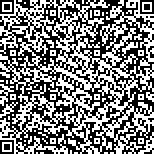| 摘要: |
| [摘要] 目的 分析老年急性脑梗死(ACI)患者血清中性粒细胞/淋巴细胞比值(NLR)、超敏C反应蛋白(hs-CRP)、几丁质酶3样蛋白1(CHI3L1)水平与卒中相关性肺炎(SAP)的关联性。方法 招募2020年8月至2022年3月泰兴市人民医院收治的487例老年ACI患者,根据SAP发生情况将其分为SAP组(n=139)和非SAP组(n=348)。比较两组临床资料,采用多因素logistic回归分析探讨影响ACI患者发生SAP的因素。通过受试者工作特征(ROC)曲线评估血清NLR、hs-CRP、CHI3L1水平预测ACI患者发生SAP的效能。结果 多因素logistic回归分析结果显示,较高水平的基线美国国立卫生研究院卒中量表(NIHSS)评分、NLR、hs-CRP、CHI3L1和发生吞咽困难是促进ACI患者发生SAP的独立危险因素(P<0.05),较高的基线舒张压(DBP)是抑制ACI患者发生SAP的保护因素(P<0.05)。ROC曲线分析结果显示,血清NLR、hs-CRP、CHI3L1水平均可有效预测ACI患者发生SAP(P<0.05),且三指标联合检测可进一步提高预测效能[AUC(95%CI)=0.825(0.783~0.868),P<0.001],灵敏度和特异度分别为77.04%、78.28%。结论 血清NLR、hs-CRP和CHI3L1水平升高均是老年ACI患者发生SAP的独立影响因素,且三者联合检测具有更高的预测价值。 |
| 关键词: 急性脑梗死 卒中相关性肺炎 中性粒细胞/淋巴细胞比值 超敏C反应蛋白 几丁质酶3样蛋白1 |
| DOI:10.3969/j.issn.1674-3806.2024.01.11 |
| 分类号:R 743 |
| 基金项目:泰兴市人民医院2022年度院级基金科研课题(编号:try2227) |
|
| A study on the correlation of serum NLR, hs-CRP and CHI3L1 levels with stroke-associated pneumonia in elderly patients with acute cerebral infarction |
|
YU Baiyang, XU Wu
|
|
Taixing Clinical College, Bengbu Medical University(Taixing People′s Hospital), Jiangsu 225400, China
|
| Abstract: |
| [Abstract] Objective To analyze the correlation of serum neutrophil-to-lymphocyte ratio(NLR), hypersensitive C-reactive protein(hs-CRP) and chitinase-3-like protein 1(CHI3L1) levels with stroke-associated pneumonia in elderly patients with acute cerebral infarction(ACI). Methods Four hundred and eighty-seven elderly patients with ACI who were admitted to Taixing People′s Hospital from August 2020 to March 2022 were recruited and divided into SAP group(n=139) and non-SAP group(n=348) according to the occurrence of SAP. The clinical data were compared between the two groups, and multivariate logistic regression analysis was used to explore the factors affecting the occurrence of SAP in the ACI patients. The efficiency of serum NLR, hs-CRP and CHI3L1 levels in predicting the development of SAP in the ACI patients was evaluated using receiver operating characteristic(ROC) curve. Results The results of multivariate logistic regression analysis showed that higher levels of baseline of National Institutes of Health Stroke Scale(NIHSS) scores, NLR, hs-CRP and CHI3L1 and occurrence of dysphagia were independent risk factors for SAP in the ACI patients(P<0.05), while higher baseline of diastolic blood pressure(DBP) was a protective factor against SAP in the ACI patients(P<0.05). The results of ROC curve analysis showed that serum NLR, hs-CRP and CHI3L1 levels could all effectively predict the occurrence of SAP in the ACI patients(P<0.05), and the combination of the three indicators could further improve the prediction efficiency[AUC(95%CI)=0.825(0.783-0.868), P<0.001], and the sensitivity and specificity were 77.04% and 78.28%, respectively. Conclusion The elevated levels of serum NLR, hs-CRP and CHI3L1 are all independent influencing factors for the occurrence of SAP in elderly patients with ACI, and the combined detection of the three indicators has higher predictive value. |
| Key words: Acute cerebral infarction(ACI) Stroke-associated pneumonia(SAP) Neutrophil-to-lymphocyte ratio(NLR) Hypersensitive C-reactive protein(hs-CRP) Chitinase-3-like protein 1(CHI3L1) |

